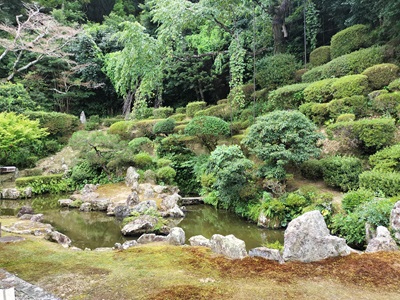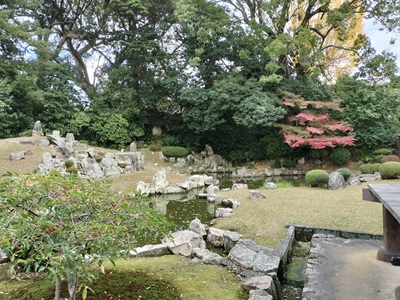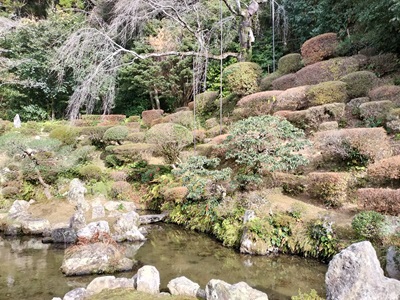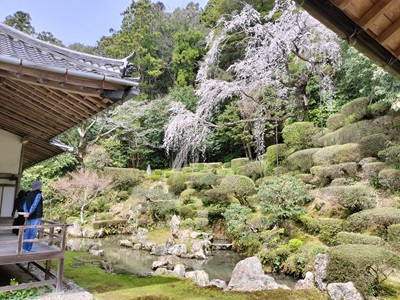
雪舟ゆかりの地
Sesshu was a master of Japanese Suiboku-ga (ink painting) from around 1420 to around 1506, 600 years ago (there is a theory that he died in 1502). He was the only one private painter to have six national treasures.
In Masuda, everyone calls him ”Sesshu-san” and he is loved by the citizens.
Sesshu went to Shokoku-ji Temple, where he studied painting under “Shubun” and “Josetsu”. It was during this time that he became acquainted with Masuda Kanetaka, the lord of Masuda Castle. He moved to Yamaguchi Prefecture and spent three years as a Japanese envoy to Tang Dynasty China to study the art of ink painting. After returning to Japan, he continued his training and visited Masuda three times. He was invited by Masuda Kanetaka, the 15th lord of Masuda, to paint the “Statue of Masuda Kanetaka (Picture on the right),” which is now on display at the Sesshu Memorial Museum (It is said that the painting was purchased for 100 million yen.) At that time, he was asked by Kanetaka to build two different gardens in the Iko-ji Temple and Manpuku-ji Temple in Masuda.
It is said that in his later years, when he was over 80 years old, he spent his last years as the chief priest of Tokoji (now Daiki-an Temple) in Masuda City and died in Masuda at the age of 87.

The two gardens created by Sesshu are located in Iko-ji Temple and Manpuku-ji Temple in Masuda City. There are two gardens with different tastes, so please compare them.
the garden of Ikouji Temple




















the garden of Manpukiji Temple
















It is said that in his later years, Sesshu lived in Daikaku-ji Temple in Masuda City, from where he enjoyed the view of Masuda and the Sea of Japan every day. Sesshu Tomb is located there.


Ink paintings related to Sesshu, etc.



Access to Sesshu Gardens